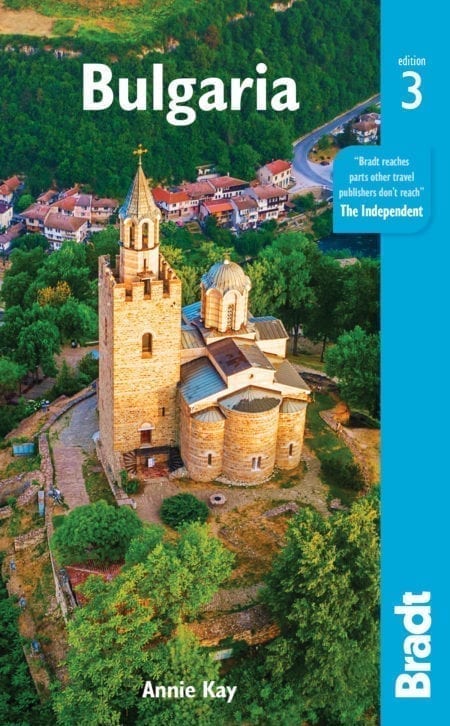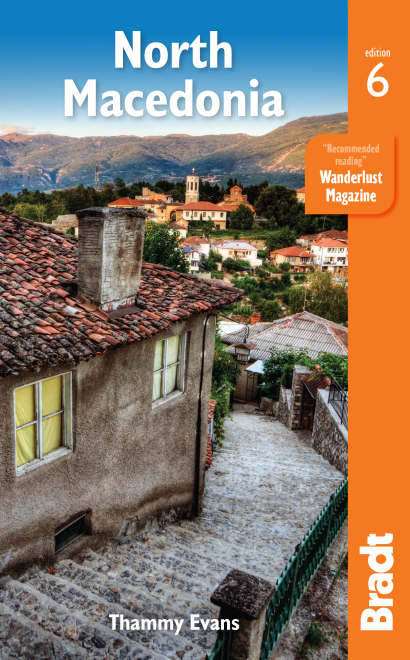From stunning landscapes to sites of historical and cultural importance, monasteries provide a wealth of interest for the avid traveller. Here is our selection of six of the best monasteries in Europe.
Geghard Monastery, Armenia
On the UNESCO World Heritage List since 2000, Geghard (‘Spear’) Monastery, with its dramatic gorge setting, is unique among other Armenian monasteries in that one side is built into the cliff face. The main cathedral was built in 1215 and is of the cross-dome type, the circular tambour being decorated with graceful arcature and narrow windows and topped by a conical cupola.
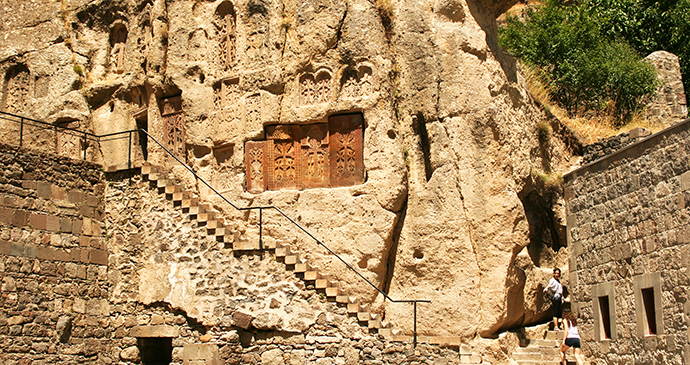
Between the spans of arcature and on the portals and cornices are depicted a variety of birds and animals as well as floral and geometrical patterns.The southern façade is particularly interesting. Above the doorway with two doves facing each other is a lion attacking an ox, the emblem of the Zakarian family. The gavit at the west side that is attached to the rock face was completed by 1225.
Tatev Monastery, Armenia
The sheer abundance of incredible monasteries in Armenia warrants a second spot dedicated to the country on this list of the best monasteries in Europe. With a dramatic clifftop setting that overlooks the Vorotan Gorge, Tatev Monastery dates to the 9th century.
The date of the now-vanished first church at the monastery is unknown, but in 844 Bishop Davit persuaded the Princes of Syunik to grant lands which would support the founding of a monastery worthy to house the relics which the church in Syunik possessed.
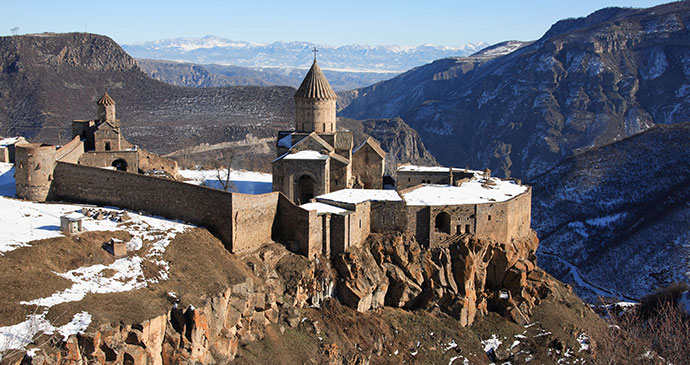
His successor, Bishop Ter-Hovhannes, built the main church, dedicated to Sts Paul and Peter between 895 and 906. It is somewhat intermediate in style between the earlier domed basilica churches and the later cross-dome churches. The umbrella cupola is supported by an unusually tall decorated circular tambour. On the east façade, above the triangular niches, long snakes are looking at two heads while on the north façade, above a window, two shorter snakes are looking at a person: Armenians supposedly regarded snakes as protectors of their homes.
Gelati Monastery, Georgia
Wonderfully set in the hills 10km to the north of Kutaisi, the monastery of Gelati is one of the most beautiful spots in Georgia and has been on UNESCO’s World Heritage List since 1994. The centrepiece is the great Cathedral of the Virgin, built by King David the Builder in 1106–25. Burnt by the Turks in 1510, and again by the Lesghians in 1579, it was restored, then closed under communism, and reopened in 1988.
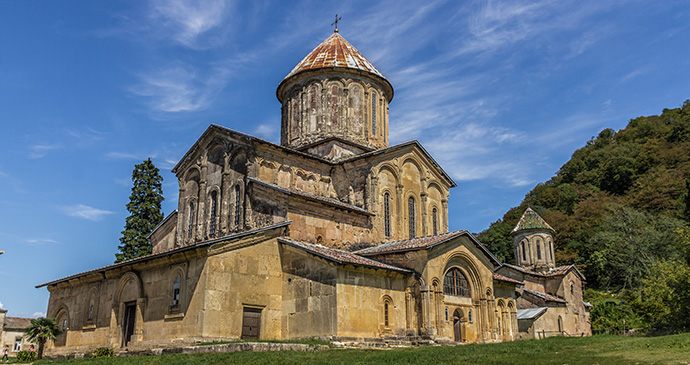
The interior is full of light, and painted, mostly in the second half of the 16th century, in fantastic colours. The pride of the church (and one of Georgia’s greatest works of art) is a remarkable mosaic (containing 2.5 million stones) in the apse of the Virgin and Child with the archangels Michael and Gabriel.
Created c.1130 in a Byzantine style with specifically Georgian features, it was damaged by earthquakes later in the same century and subsequently. The lower half was restored by painting – although this is often denounced as communist vandalism, it seems that it was genuinely impossible to restore it as mosaic.
Rila Monastery, Bulgaria
The road to Rila Monastery runs beside the River Rilska (in the west of the country) through beautiful wooded mountains. Arriving early, perhaps on a winter morning when a dusting of snow picks out the architectural features, allows you to experience a feeling of awe at the immense walls and astonishment at the vibrant colours in the courtyard. This will enable you to understand the importance that Rila Monastery has for Bulgarians.
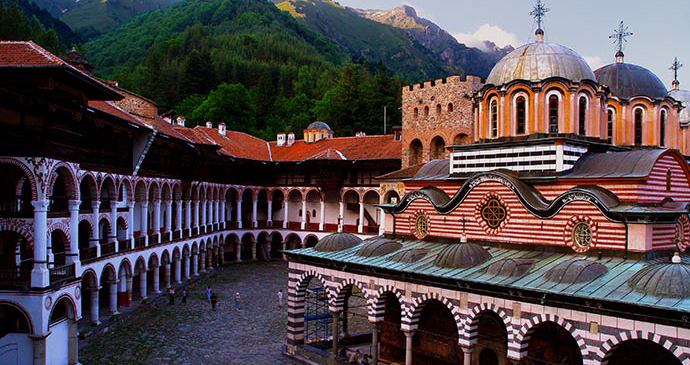
Hrelyo’s Tower is the oldest of the buildings visible today and was built in 1335. At the top of its five stories, there is a small chapel with vestiges of frescoes. There was damage and destruction to the monastery during the Ottoman conquest and the subsequent occupation, but after each setback renovation soon began again restoring the building to one of the best monasteries in Europe.
The return of the relics of the founder Ivan Rilski from Veliko Turnovo in 1469 was a significant event for the growing importance of the monastery. After the great fire of 1833 the Ottoman sultan allowed the rebuilding of the monastery, and plentiful financial donations from the people, together with the gifts of time and skills by many great artists and craftsmen, resulted in the splendid building we see now.
Studenica Monastery, Serbia
The final resting place of Stefan Nemanja (the first Serbian Saint and the founder of the monastery), the Monastery of Studenica is situated high above the river that bears the same name, among splendid mountainous surroundings.
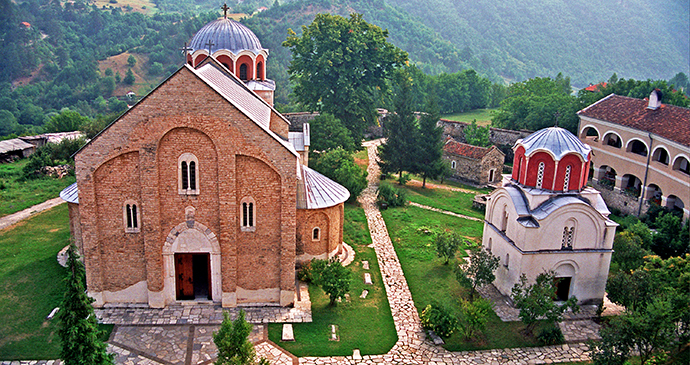
It is considered one of the holiest places in the Serbian national psyche due to its links with Stefan Nemanja and remains of high importance today. This church, the prototype of the Raška School, takes its influence from both Romanesque and Byzantine sources. Built in 1209, it is the oldest example of the Raška style that still exists today.
Treskavec Monastery, North Macedonia
Remote Treskavec Monastery is a magnificent old complex of significant historical and cultural value. Sadly, however, despite being one of the best monasteries in Europe, the site is in urgent need of renovation and consequently made the World Monument Fund’s 2006 top 100 most endangered sites. The name of the ancient town (Kolobaise) is written in a long inscription cut into a stone used as the base of the cross on top of the central dome of the church.
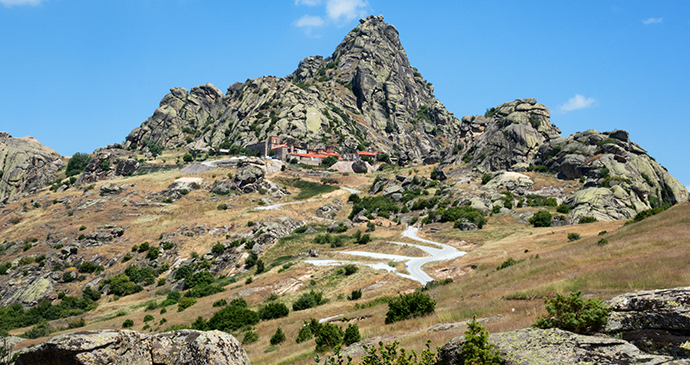
There are also other inscriptions around the church that date back to the 1st century BC, when a temple to Apollo and Artemis was first built on this site. Inside the cupola there is one of the few frescoes of Christ as a young boy. Additionally, the church has a number of 16th-century frescoes with the typical greenish sheen on the face of the figures that was the hallmark of Macedonian rather than Greek artists.
More information
For more information, see our guides:
